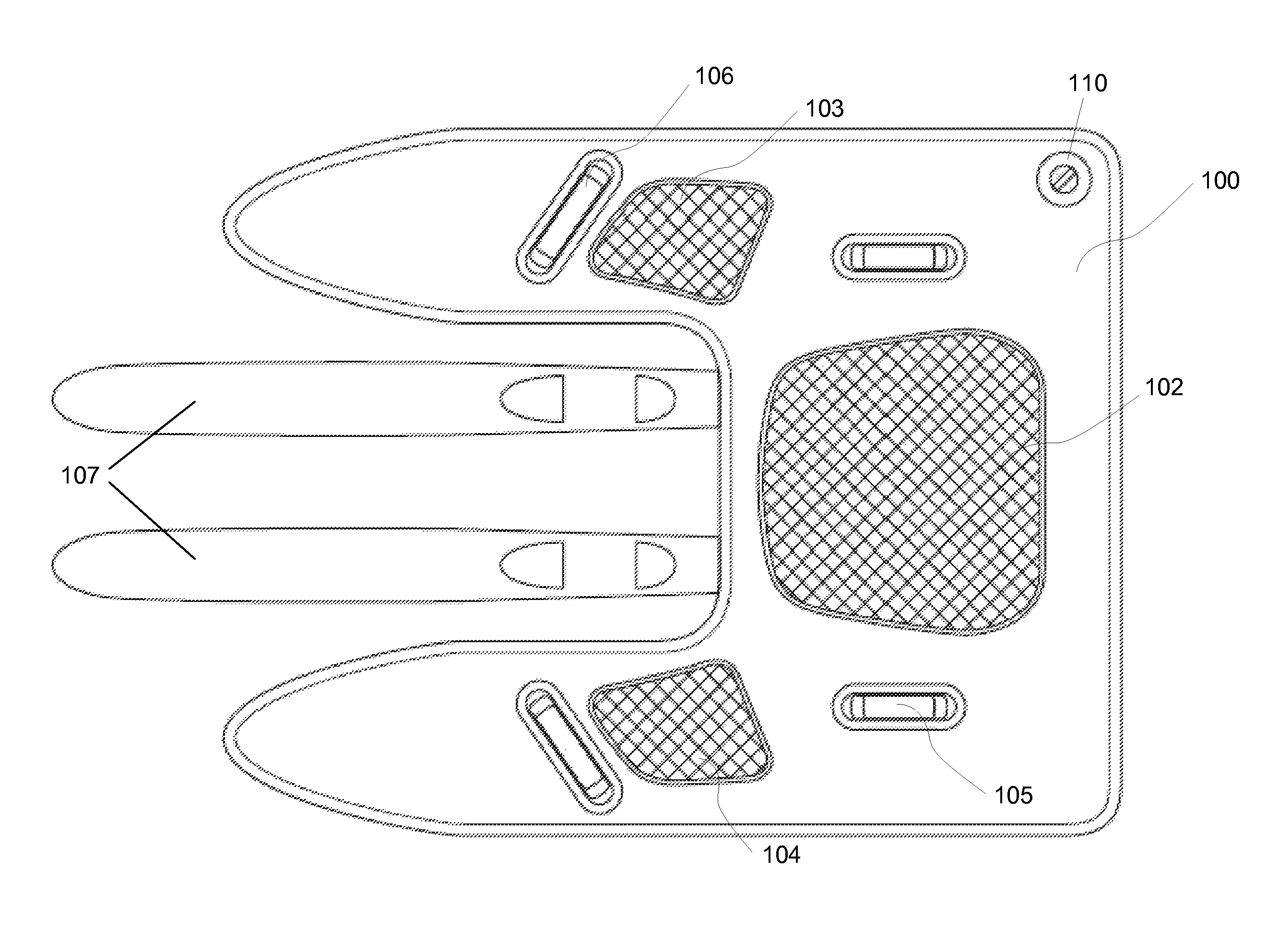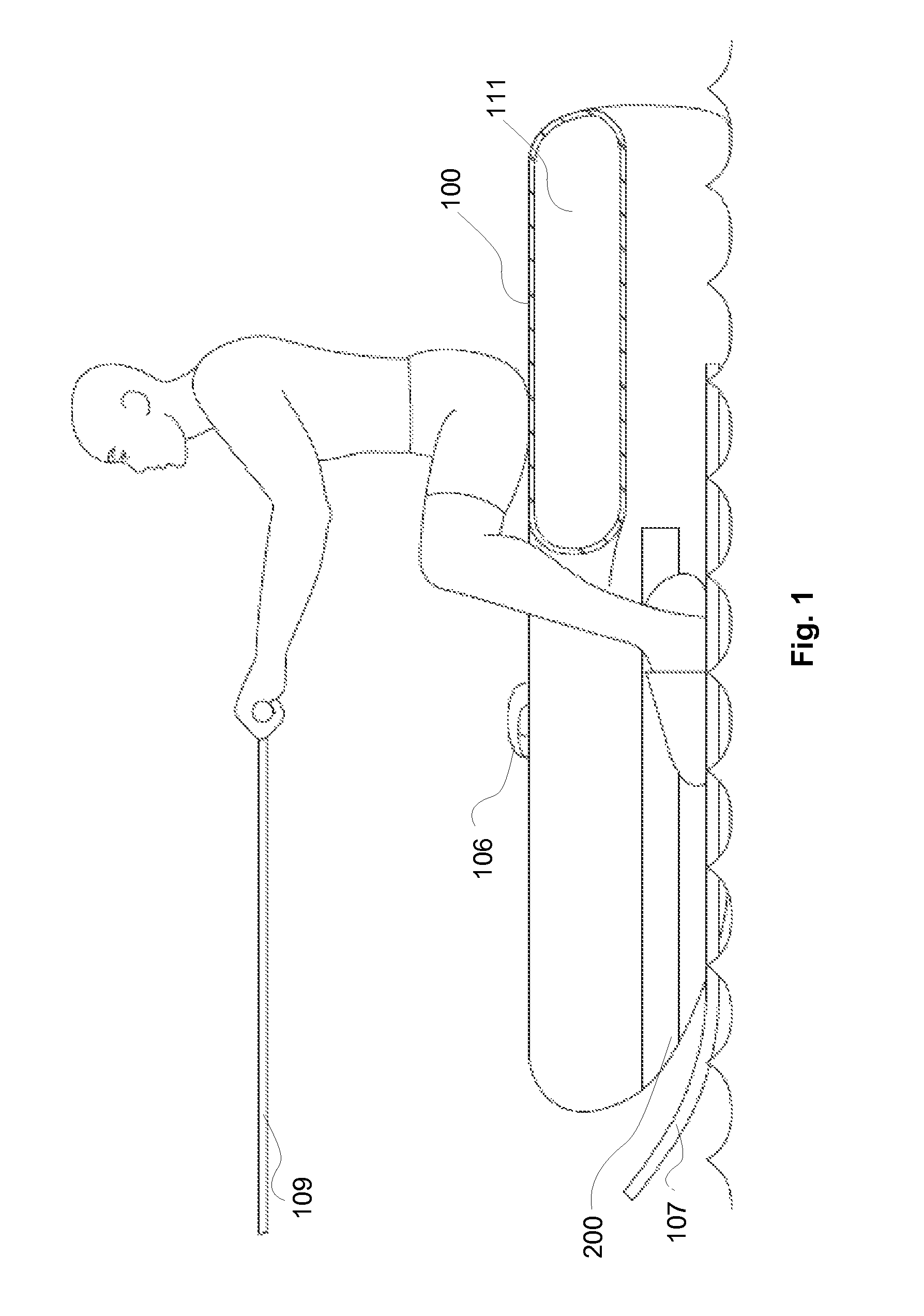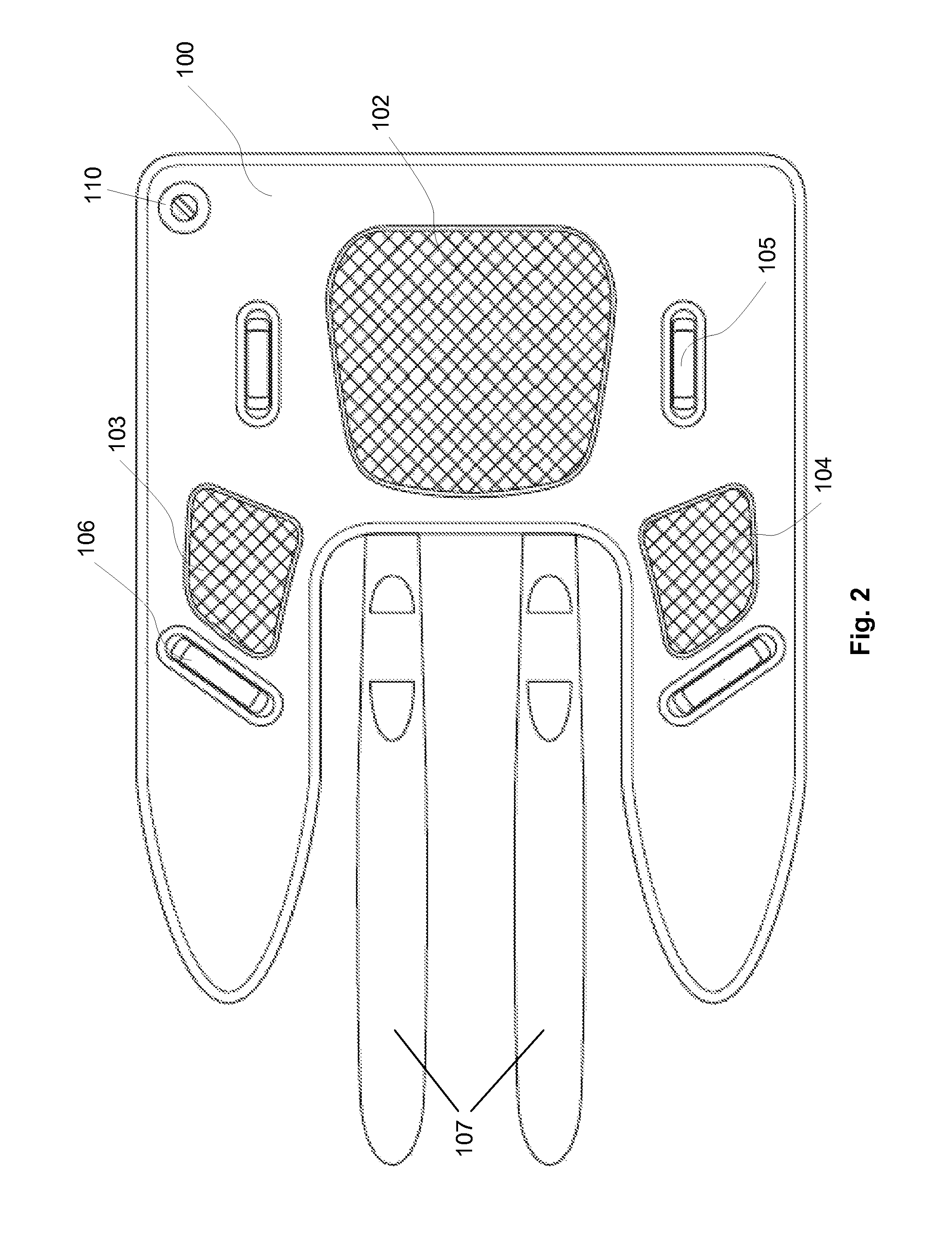Aquatic sport assistance device
a technology for assistance devices and sports, applied in the field of aquatic sports, can solve problems such as lack of strength or coordination, impede beginners' success, and difficulty in mastering water skiing, wake surfing, slalom skiing, etc., and achieve the effect of quick in their own learning process
- Summary
- Abstract
- Description
- Claims
- Application Information
AI Technical Summary
Benefits of technology
Problems solved by technology
Method used
Image
Examples
Embodiment Construction
[0033]This invention relates generally to aquatic sports and, more specifically, to a device to assist with surface water sports. Specific details of certain embodiments of the invention are set forth in the following description and in FIGS. 1-11 to provide a thorough understanding of such embodiments. The present invention may have additional embodiments, may be practiced without one or more of the details described for any particular described embodiment, or may have any detail described for one particular embodiment practiced with any other detail described for another embodiment.
[0034]Importantly, a grouping of inventive aspects in any particular “embodiment” within this detailed description, and / or a grouping of limitations in the claims presented herein, is not intended to be a limiting disclosure of those particular aspects and / or limitations to that particular embodiment and / or claim. The inventive entity presenting this disclosure fully intends that any disclosed aspect of...
PUM
 Login to View More
Login to View More Abstract
Description
Claims
Application Information
 Login to View More
Login to View More - R&D
- Intellectual Property
- Life Sciences
- Materials
- Tech Scout
- Unparalleled Data Quality
- Higher Quality Content
- 60% Fewer Hallucinations
Browse by: Latest US Patents, China's latest patents, Technical Efficacy Thesaurus, Application Domain, Technology Topic, Popular Technical Reports.
© 2025 PatSnap. All rights reserved.Legal|Privacy policy|Modern Slavery Act Transparency Statement|Sitemap|About US| Contact US: help@patsnap.com



